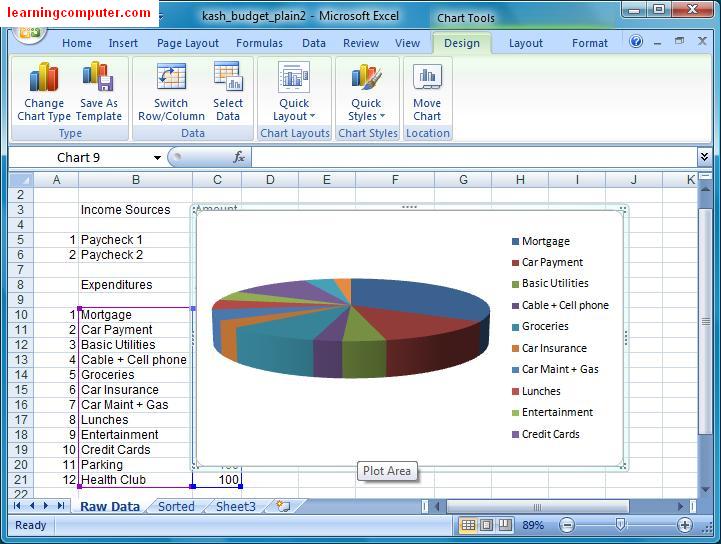
Chart excel 2007 tutorial how to#
For this, we can use OFFSET formula.Ī refresher on how to use OFFSET formula:ģ. Ok, the problem is that as and when we add a row at the end (or remove a row), we should update the chart’s data range. Write OFFSET formulas and create named ranges from them Lets assume the data table is in the cell range: $F$6: $G$14 2. As user keeps on adding new rows we will have to update our chart’s source data. In our case the data should be filled in the following table. Identify the data from which you want to make dynamic range

Steps for creating dynamic chart ranges using OFFSET formula: 1. We all know that OFFSET formula is used to get a range of cells by passing on starting point and number of cells to offset. Using OFFSET formula to make dynamic ranges for chart dataįor some reason if you cannot use data tables, the next method is to use OFFSET formula along with named ranges. See the below screencast to understand how this works This way, when you add or remove rows from the data table, the chart gets automatically updated. If you are using Excel 2003 or above you can create a data table (or list) from the chart’s source data. The easiest way to make charts with dynamic ranges Ofcourse not, there are 2 ways to do this. Well, you can do it very easily using excel formulas and named ranges. Wouldn’t it be cool if the ranges were dynamic and charts get updated automatically when you add (or remove) rows? You cant edit the chart input data ranges every time you add a row. We all know that to make a chart we must specify a range of values as input.īut what if our range is dynamic and keeps on growing or shrinking.


 0 kommentar(er)
0 kommentar(er)
